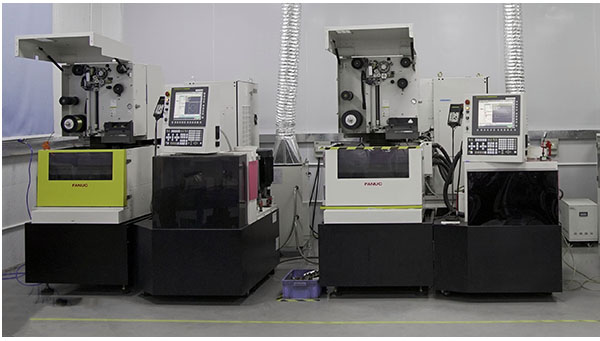Essential Maintenance Tips for Maximizing Lathe Machine Performance and Longevity
As a leading plastic injection mold manufacturer in China, Elite relies on advanced machinery like lathe machines to produce high-precision molds and molded parts. To maintain our commitment to quality and efficiency, regular maintenance of these machines is essential. Proper upkeep not only ensures high performance but also extends the life of the lathe machines, reducing downtime and maintenance costs. In this article, we will share essential maintenance tips that help maximize lathe machine performance and longevity.
Why Lathe Machine Maintenance is Crucial in Mold Manufacturing
Lathe machines are critical to the production of high-precision components in plastic injection mold manufacturing. These machines handle various operations such as cutting, shaping, and finishing mold components. Regular maintenance ensures that they continue to operate with the accuracy and efficiency needed for precise mold production.
Key Benefits of Proper Lathe Machine Maintenance:
- Increased Machine Lifespan: Routine maintenance prevents wear and tear, extending the life of the machine.
- Enhanced Performance: Well-maintained machines deliver consistent results, ensuring precision in mold manufacturing.
- Reduced Downtime: Preventative maintenance reduces the likelihood of unexpected breakdowns, keeping production schedules on track.
- Cost Savings: Regular upkeep minimizes repair costs and prevents expensive machine replacements.

Daily Lathe Machine Maintenance Practices
Daily maintenance routines are critical for ensuring that lathe machines remain in top working condition. At Elite, we adhere to the following daily practices to keep our lathe machines running smoothly.
1. Clean the Machine After Each Use
- Why It’s Important: Dust, debris, and chips from machining processes can accumulate on the machine, leading to blockages and affecting the accuracy of future operations.
- What to Do: After each use, clean the machine thoroughly. Remove chips, dust, and oil from the surface, tool holder, and work area. Use a brush or compressed air to clear chips from hard-to-reach places.
2. Check Lubrication Levels
- Why It’s Important: Proper lubrication reduces friction and wear on moving parts, ensuring smooth operation and preventing damage to critical components.
- What to Do: Inspect the lubrication system daily and ensure that the lathe is properly lubricated. Check the oil levels and refill as necessary. Pay attention to critical areas such as the spindle, slides, and lead screws.
3. Inspect Cutting Tools and Tool Holders
- Why It’s Important: Dull or damaged cutting tools can affect the quality of the machined parts and put unnecessary strain on the machine.
- What to Do: Check the condition of the cutting tools and tool holders before and after each use. Replace or sharpen tools that are worn or damaged to ensure optimal cutting performance.
Weekly Lathe Machine Maintenance
Weekly maintenance helps address wear and tear that might not be immediately visible during daily checks. At Elite, we perform the following weekly checks to maintain the longevity and performance of our lathe machines.
1. Inspect the Coolant System
- Why It’s Important: Coolant is essential for keeping cutting tools and workpieces cool during machining, preventing overheating and maintaining precision.
- What to Do: Check the coolant levels and ensure that the coolant is clean and free of contaminants. If the coolant is dirty or depleted, replace it to ensure efficient cooling and lubrication during operations.
2. Test and Calibrate Machine Components
- Why It’s Important: Calibration ensures that the machine is operating with the required precision, which is critical for producing high-quality mold components.
- What to Do: Test and calibrate key components such as the spindle, tailstock, and chuck. Ensure that the machine is operating within specified tolerances. Adjust components as necessary to maintain accuracy.
3. Check Drive Belts and Pulleys
- Why It’s Important: The drive belts and pulleys are responsible for transferring power to the lathe’s spindle. Worn or loose belts can lead to inconsistent machine performance.
- What to Do: Inspect the condition of the drive belts and pulleys weekly. Look for signs of wear or cracking and tighten any loose belts. Replace belts that show significant wear to avoid machine breakdowns.
Monthly and Long-Term Lathe Machine Maintenance
Monthly and long-term maintenance involves more in-depth checks to ensure the machine continues to perform at peak efficiency. These tasks help detect potential issues before they become significant problems, protecting the machine’s longevity and performance.
1. Examine Bearings and Gears
- Why It’s Important: Bearings and gears are subject to constant wear during machining operations. Ensuring they are in good condition is crucial for maintaining smooth and quiet operation.
- What to Do: Inspect the condition of bearings and gears for signs of wear, misalignment, or lubrication issues. If necessary, clean or replace them to ensure smooth rotation and minimize vibration during machining.
2. Evaluate the Electrical System
- Why It’s Important: Electrical components such as motors, control panels, and wiring can degrade over time, affecting the lathe’s performance and safety.
- What to Do: Perform a detailed inspection of the electrical system, looking for signs of wear, loose connections, or faulty wiring. Regularly check motor brushes and replace them if they show significant wear.
3. Conduct a Full Alignment Check
- Why It’s Important: Misalignment of lathe components such as the spindle, chuck, or tailstock can lead to inaccurate machining and part defects.
- What to Do: Check the alignment of all critical components using precise measuring instruments. Realign any components that have shifted to ensure the machine maintains its accuracy during operation.
Best Practices for Long-Term Machine Health
To maximize the lifespan of your lathe machine, it is essential to follow long-term maintenance practices and adhere to manufacturer guidelines. At Elite, we implement the following best practices to ensure our lathe machines deliver consistent performance over the long term.
1. Regularly Schedule Professional Servicing
- Why It’s Important: Professional servicing provides in-depth inspections and ensures that the machine is running optimally.
- What to Do: Schedule periodic professional servicing by qualified technicians to inspect all critical machine components, perform necessary repairs, and ensure the machine operates at peak performance.
2. Keep Detailed Maintenance Records
- Why It’s Important: Accurate maintenance records help track the machine’s performance, identify recurring issues, and ensure that maintenance tasks are performed on schedule.
- What to Do: Maintain a detailed log of all maintenance activities, including daily, weekly, and monthly tasks. Record any repairs, replacements, or adjustments made to the machine.
3. Use High-Quality Spare Parts
- Why It’s Important: Using substandard parts can compromise the performance of the lathe machine and lead to frequent breakdowns.
- What to Do: Always use high-quality, manufacturer-approved parts when replacing components or performing repairs on the lathe machine. This ensures the machine operates reliably and reduces the likelihood of premature wear.
Conclusion
Proper maintenance of lathe machines is crucial for ensuring optimal performance and extending the machine’s lifespan. At Elite, we follow a comprehensive maintenance routine that includes daily, weekly, and long-term tasks to keep our lathe machines in top working condition. By following these essential maintenance tips, we ensure that our lathe machines continue to produce high-precision mold components efficiently, allowing us to deliver top-quality molds and molded parts to our clients.
For companies looking for a reliable plastic injection mold manufacturer, Elite offers cutting-edge precision machining backed by our commitment to machine maintenance and quality assurance. Contact us today to learn more about our services and how we can meet your mold manufacturing needs.
Related news
Our Certificates
By co-operating with Elite Mold, you have selected one of the most reliable ISO 9001 certified plastic mold manufacturer, Elite Mold as a plastic injection mold manufacturer specializing in plastic injection mold and supplying plastic injection molding services for plastic mold design, prototype makings, mold flow analysis, precise machining, OEM services, ODM services and so on, building custom plastic injection molding. We are committed to enhance the Process optimized and quality of service, shorten lead time and assist in lowering inventory, by providing new products every year to bring in continuous and higher profits for our clients. The ability to produce mold at the International standard, strong engineering and mold design capability, aggressive delivery, competitive pricing and business integrity continues to be the success factor of Elite Mold.










